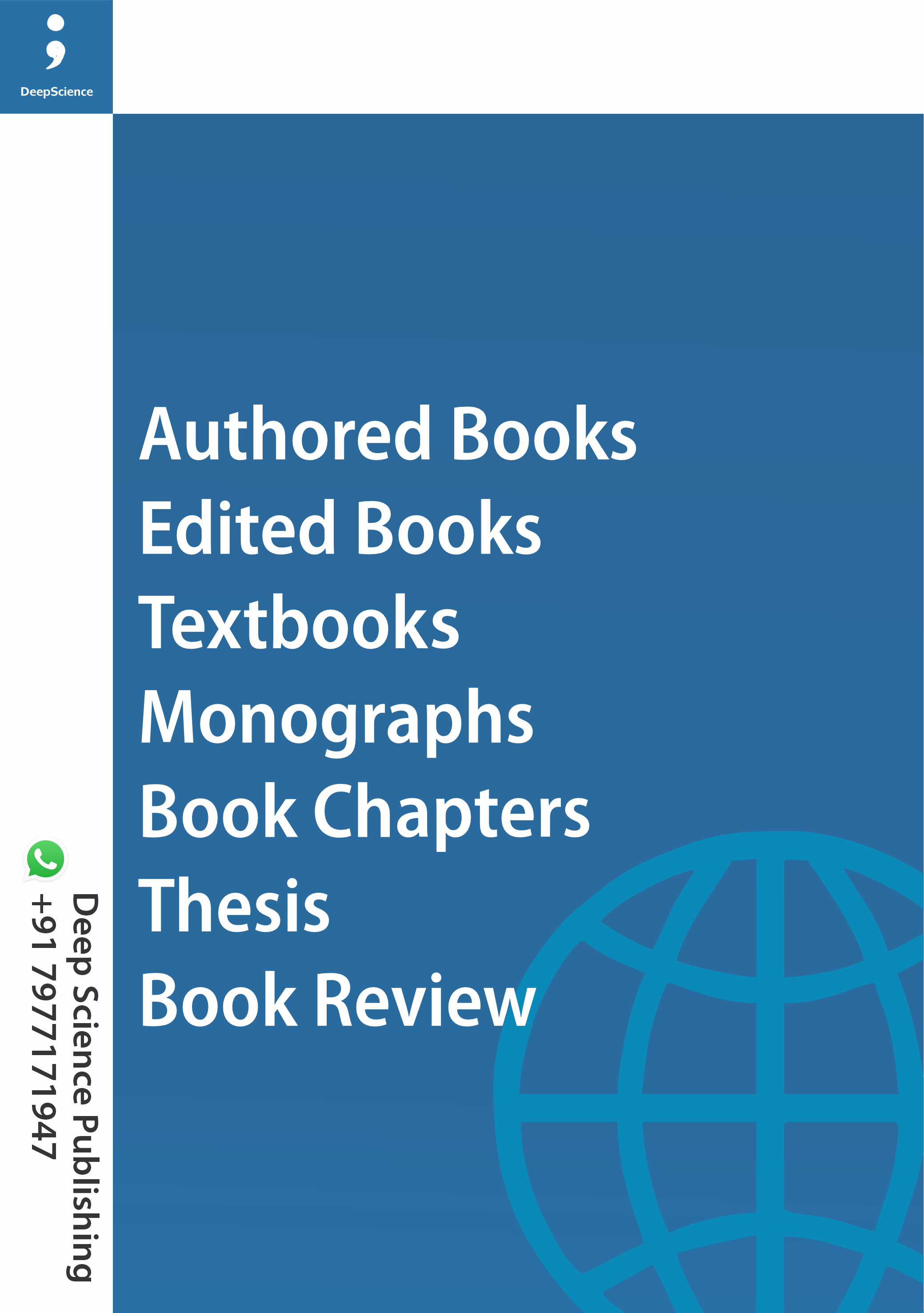A review on Tribulus terrestris: Insights into its medicinal properties and applications
Synopsis
Tribulus terrestris (Zygophyllaceae), commonly referred to as puncture vine or gokshura, is a medicinal plant well-known for its numerous therapeutic applications and bioactive phytochemical profiles. This plant which has traditionally been utilized in Ayurveda, Traditional Chinese Medicine and other folk medical systems, has a wide range of pharmacological qualities including aphrodisiac, anti-inflammatory, diuretic, antioxidant and antibacterial effects. These qualities are mostly due to its high concentration of saponins, flavonoids, alkaloids and other secondary metabolites. Recent advances in phytochemical and pharmacological research have emphasized its potential for treating problems such as urolithiasis, sexual dysfunction, cardiovascular disease and metabolic disorders.
Keywords: Tribulus terrestris, Medicinal plant, Zygophyllaceae.
Citation: Parvin, S. J., & Vijaya, T., (2024). A review on tribulus terrestris: Insights into its medicinal properties and applications. In Sustainable Innovations in Life Sciences: Integrating Ecology, Nanotechnology, and Toxicology (pp. 1-7). Deep Science Publishing. https://doi.org/10.70593/978-81-982935-0-3_1
- Introduction
Tribulus terrestris is an herb that is often known as Gokhru and is a member of the Zygophyllaceae family. It is widespread throughout India (Stefanescu et al. 2020). The whole plant is used medicinally, although the fruits and roots are utilized more often. Tribulus terrestris is utilized in China for a variety of ailments pertaining to the kidney, liver and immunological system in addition to the cardiovascular system. Its anti-urolithiatic, diuretic and aphrodisiac qualities are well-known in Ayurveda. In addition to increasing menstrual flow and curing gonorrhea, leaves are diuretic and tonic. Due to its diuretic properties, the fruit gets rid of bladder stones and gravel in the urine. The root makes a tasty appetizer or stomachic. There have been reports of many steroidal saponins, alkaloids, furostanal glycosides and flavanoids. Research from various sources, such reports, books, PubMed, Science Direct, Wiley, Springer as well as other databases has shown that its potent bioactive components have the potential to heal a variety of maladies in humans and animals. Our review distinguishes itself from other published publications by focusing on the significance of this topic for human and veterinary health. It has potential as an aphrodisiac for treating reproductive issues in both humans and animals (Saeed et al. 2024). More research is needed to understand the medicinal properties of herbs like T. terrestris, allowing for their application in a larger range of nutraceutical products for humans.
Habitat
According to Vaidya Gogte and Vishnu Mahadev (2012) T. terrestris found all throughout India, particularly in the north and south.
Botanical Description
According to Semerdjieva and Zheljazkov (2019) Tribulus terrestris is a small herb with a height of 2 to 3 feet. Branches spread from all sides. Leaves are Similar to those of a gram plant. Flowers are small, yellow, with five petals. Fruits were lightly pentagonal, with 2-3 sharp thorns. Many seeds contain fragrant oils. Roots are 10-13 cm long, smokey with a little strong fragrance, and sweet. Flowering happens in the autumn, followed by fruits. The root consists of cylindrical, fibrous, and frequently branching parts measuring 7-18 cm in length fracture fibrous, aromatic odor, sweetish and astringent flavor. A transverse cut of the primary root reveals a layer of epidermis followed by 4-5 layers of thin-walled parenchymatous cortex. Endodermis is separate, with a pericycle encircling the diarchy stele. In mature root have 4-6 layers of cork, a single layer of cork cambium and 6-14 layers of thin-walled parenchymatous cells with varied fiber distribution. The xylem parenchyma has simple pits, reticulate thickening, and few fibers. Secondary cortex, phloem, and medullar ray cells contain starch grains and calcium oxalate rosette crystals, whereas xylem ray cells also have a few prismatic crystals. Fruit is stalked and globose, with fire-woody wedge-shaped cocci and two pairs of short spines (one larger than the other). Microscopically, the pericarp is divided into epicarp, mesocarp, and endocarp. Non glandular trichomes cover the outside surface of the epicarp. The endocarp consists of 3-4 layers of sclerenchymatous cells and prismatic calcium oxalate crystals. Vessels have simple pits and some exhibit helical thickening. Fibers are lignified and linear, with tapering ends. Parts used include fruit, root and pentad (Database on Medicinal Plants used in Ayurved, 2005).
- Chemical constituents
Fruits include chlorogenin, diosgenin, gitogenin, rutin, and rhamnose. Roots contain champesterol, sitosterol, stigmasterol, diosgenin and neotrigogenin. Aerial Parts contains Astragalin, dioscin, diosgenin, hecogenin, ruscogenin, furostanol, glycosides, saponin terrestrosides, etc.
Cultivation
The herb is a popular necessity and grows quickly after the first showers. It favors medium and sandy soils. The plant can be reproduced using seeds. It produces blooms and fruits virtually all year.
Contraindications
According to Sabnis (2006) Tribulus terrestris Linn is considered quite safe, with no known contraindications.
Drug interaction
There have been no recorded medication interactions between Tribulus terrestris and any synthetic or plant-based drug.
Therapeutic Applications of Gokshura
It has been demonstrated that Gokshura possesses anthelmintic, antifungal and antibacterial activity against both Gram-positive and Gram-negative bacteria (Kiran 2011; Deepak et al. 2002; Mojdeh et al. 2014). According to Mohammed (2008) T. terrestris possesses anti-urolithiasis action (Choy et al. 2019), aphrodisiac activity (Saurabh et al. 2012), anti-inflammatory activity (Rajendar et al. 2011) diuretic (Oh et al. 2012; Mahboubi (2022), Neuroprotective effect (Wang et al. 2019), anti-hyperlipidemic (chu et al. 2003), Hepatoprotective activity (Arain et al. 2022), anti-tumor (Saurabh et al. 2012), hypotensive (Phillips et al. 2006), anti-diabetic activity (Lamba et al. 2012), antispasmodic activity (Arcasoy et al. 1998), cardiotonic activity (Kim et al. 2011), immune-suppressive (Tiwari 2011), Anthelmintic (Ahmed et al. 2020), Antioxidant (Bhuvad 2016). The empirical application indicated in Ayurveda has been validated in scientific platforms as demonstrated in the same way as scientific verification in clinical instances has done so; dysfunctional sexual behavior in women (Akhtari 2014), Gonadal late-onset erectile dysfunction, hypoglycemia, hypolipidemia and hypofunction symptoms of the lower urinary tract in women
Fig.1. Medicinal importance of Tribulus terrestris
with diabetes (Arcasoy et al. 1998) benign hyperplasia of the prostate (Bhalodia et al. 2012). Diabetes-related microalbuminuria (Fatima and Sultana 2017) renal stones (Ramkete 2012) menopausal transition symptoms (Rahman 2017).
Conclusion
Medicinal plants are essential components of Indian medicinal systems and serve as a source for drug development. In such a way T. terrestris may be an effective source because it has varied bioactive chemicals in its plant parts. T. terrestris has been utilized for generations in the Unani School of medicine. It has been used to treat many sexual disorders. T. terrestris has long been utilized in traditional medicine as a rheumatic pain reliever and analgesic herb. This comprehensive review covers T. terrestris phytochemistry, pharmacology, benefits and medicinal applications. T. terrestris plant has been extensively studied for its phytochemical and pharmacological properties including diuretic, anti-urolithiasis, anti-hypertensive, a pain reliever anti-hyperlipidemic, immunomodulatory, hypoglycemic, chemotherapy, anti-helminthic, aphrodisiac, antibacterial, liver-protective properties and anti-inflammatory properties. This herb's population is diminishing in the wild. Therefore, cultivation and conservation efforts should be supported and also further research is needed to understand its biological and molecular mechanisms.
Reference
Ahmed, S., Khan, A. A., Yadav, P., Akhtar, J., Akram, U., & Shamim, L. F. (2020). Gokhru (Tribulus terrestris Linn.): Pharmacological actions and therapeutic applications: A Review. International Journal of Herbal Medicine.
Akhtari, E. R. F. (2014). Tribulus terrestris for Treatment of Sexual Dysfunction in Women: Randomized Double-Blind Placebo-Controlled Study. Daru, 20(1), 40.
Arain, M. A., Nabi, F., Shah, Q. A., Alagawany, M., Fazlani, S. A., Khalid, M., & Farag, M. R. (2022). The role of early feeding in improving performance and health of poultry: herbs and their derivatives. World's Poultry Science Journal, 78(2), 499-513.
Arcasoy, H. B., Erenmemisoglu, A., Tekol, Y., Kurucu, S., & Kartal, M. (1998). Effect of Tribulus terrestris L. saponin mixture on some smooth muscle preparations: a preliminary study. Bollettino chimico farmaceutico, 137(11), 473-475.
Bhalodia, S. G. B. C., Bhuyan, C., Gupta, S. K., & Dudhamal, T. S. (2012). Gokshuradi Vati and Dhanyaka-Gokshura Ghrita Matra Basti in the Management of Benign Prostatic Hyperplasia. Ayu, 33(4), 547-551.
Bhuvad, S. N. K. (2016). Assessment of Free Radical Scavenging Activity of Ten Madhuraskandha Drugs Through UV Spectroscopic and Chromatographic Technique. J. Pharm. Pharm. Sci, 8(3), 92-96.
Choy, C. A., Robison, B. H., Gagne, T. O., Erwin, B., Firl, E., Halden, R. U., & S. Van Houtan, K. (2019). The vertical distribution and biological transport of marine microplastics across the epipelagic and mesopelagic water column. Scientific reports, 9(1), 7843.
Chu, S., Qu, W., Pang, X., Sun, B., & Huang, X. (2001). Effect of saponin from Tribulus terrestris on hyperlipidemia. Zhong Yao Cai, 26(5), 341-4.
Database on Medicinal Plants used in Ayurved (2005), Vol. 3; CCRAS; New Delhi; Reprint 2005; p. 256- 258.
Deepak, M., Dipankar, G., Prashanth, D., Asha, M. K., Amit, A., & Venkataraman, B. V. (2002). Tribulosin and beta-sitosterol-D-glucoside, the anthelmintic principles of Tribulus terrestris. Phytomedicine, 9(8), 753-6.
Fatima, L., & Sultana, A. (2017). Efficacy of Tribulus terrestris L. (Fruits) in Menopausal Transition Symptoms: A Randomized, Placebo-Controlled Study. Adv. Integr. Med, 4(2), 56-65.
Kim, H. J., Kim, J. C., Min, J. S., Kim, M. J., Kim, J. A., Kor, M. H., Yoo, H. S., & Ahn, J. K. (2011). Aqueous extract of Tribulus terrestris Linn induces cell growth arrest and apoptosis by down-regulating NF-κB signaling in liver cancer cells. J Ethnopharmacol, 1136(1), 197-203.
Kiran, B. L. V. (2011). In-Vitro Evaluation of Aqueous and Solvent Extract of Tribulus terrestris L. Leaf Against Human Bacteria. Int. J. Pharm. Tech. Res, 3, 1897-1903.
Lamba, H. S., Bhargava, C. H., Thakur, M., & Bhargava, S. (2011). α-glucosidase and aldose reductase inhibitory activity in vitro and antidiabetic activity in vivo of Tribulus terrestris. Int J Pharm Pharma Sci, 3, 270-2.
Mahboubi, M. (2022). Tribulus terrestris and its efficacy in the treatment of urinary calculi. The Natural Products Journal, 12(7), 2-10.
Mohammed, M. J. (2008). Biological Activity of Saponins Isolated from Tribulus terrestris (Fruit) on Growth of Some Bacteria. Tikrit J Pure Sci, 13.
Mojdeh, H. V., Melina, M., Farzad, K., Mohammad, K., Mohsen, H., & Saeed, K. (2014). Investigation of antimicrobial effect of Tribulus terrestris L against some gram positive and negative bacteria and candida spp.
Oh, J. S., Baik, S. H, Ahn, E. K, Jeong, W., Hong S. S. (2012). Anti-inflammatory activity of Tribulus terrestris in RAW 264.7 Cells. J Immunol, 88, 54-2.
Phillips, O. A., Mathew, K. T., & Oriowo, M. A. (2006). Antihypertensive and vasodilator effects of methanolic and aqueous extracts of Tribulus terrestris in rats. J Ethnopharmacol, 104(3), 351-5.
Rahman, M. N. A. M. (2017). A Randomized Open Label Clinical Trial of Kar-E-Khasak (Tribulus terrestris) in the Management of Hisat-Ul-Kuliyah (Nephrolithiasis). Int. J. Adv. Pharm. Biosci, 5(3), 206-211.
Rajendar, B., Bharavi, K., Rao, G. S., Kishore, P. V., Kumar, P. R., Kumar, C. S., & Patel, T. P. (2011). Protective effect of an aphrodisiac herb Tribulus terrestris Linn on cadmium-induced testicular damage. Indian J Pharmacol, 43(5), 568-73.
Ramkete, R. S. T. A. (2012). Clinical Efficacy of Gokshura-Punarnava Basti in the Management of Microalbuminuria in Diabetes Mellitus. Ayu, 33(4), 537-541.
Sabnis, M. (2006). Chemistry and Pharmacology of Ayurvedic Medicinal Plants. Choukhamba Amarbharati Prakashan, Varanasi, 363-366.
Saeed, M., Munawar, M., Bi, J. B., Ahmed, S., Ahmad, M. Z., Kamboh, A. A., Arain, M. A., Naveed, N., & Chen H. (2024). Promising phytopharmacology, nutritional potential, health benefits, and traditional usage of Tribulus terrestris L. herb. Heliyon, 10, e25549.
Saurabh, C., Tanuja, N., Gauresh, S., Rakesh, K., & Sadhana S. (2012). Comparative evaluation of diuretic activity of different extracts of Tribulus terrestris fruits in experimental animals. International Journal of Research in Photochemistry and Pharmacology, 2(3), 129-33.
Semerdjieva, I. B., & Zheljazkov, V. D. (2019). Chemical Constituents, Biological Properties, and Uses of Tribulus terrestris: A Review. Natural Product Communications, 14(8).
Stefanescu, R., Vescan, A. T., Negroiu, A., Aurica, E., & Vari, C. E. (2020). A comprehensive review of the phytochemical, pharmacological and toxicological properties of Tribulus terrestris L. Biomolecules, 10(5), 752.
Tiwari, A. S. N. (2011). Effect of Five Medicinal Plants Used in Indian System of Medicine on Immune Function in Wistar Rats. Afr. J. Biotechnol, 10, 1637-1645.
Vaidya Gogte & Vishnu Mahadev. (2012). Ayurvedic Pharmacology and Therapeutic uses of Medicinal Plants. Edition: Reprint 2012, Choukhamba Publications, New Delhi; p. 360, 362, 484.
Wang, Y., Guo, W., Liu, Y., Wang, J., Fan, M., Zhao, H., & Xu, Y. (2019). Investigating the protective effect of gross saponins of Tribulus terrestris fruit against ischemic stroke in rat using metabolomics and network pharmacology. Metabolites, 9(10), 240.














